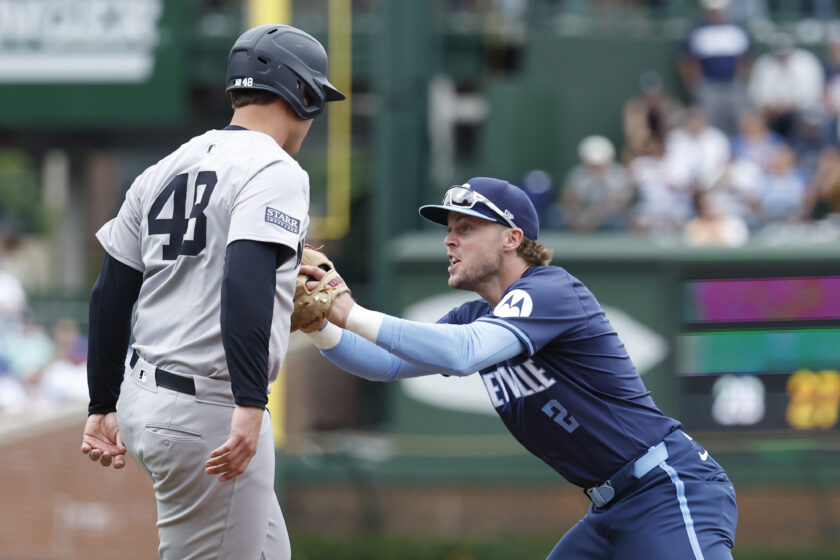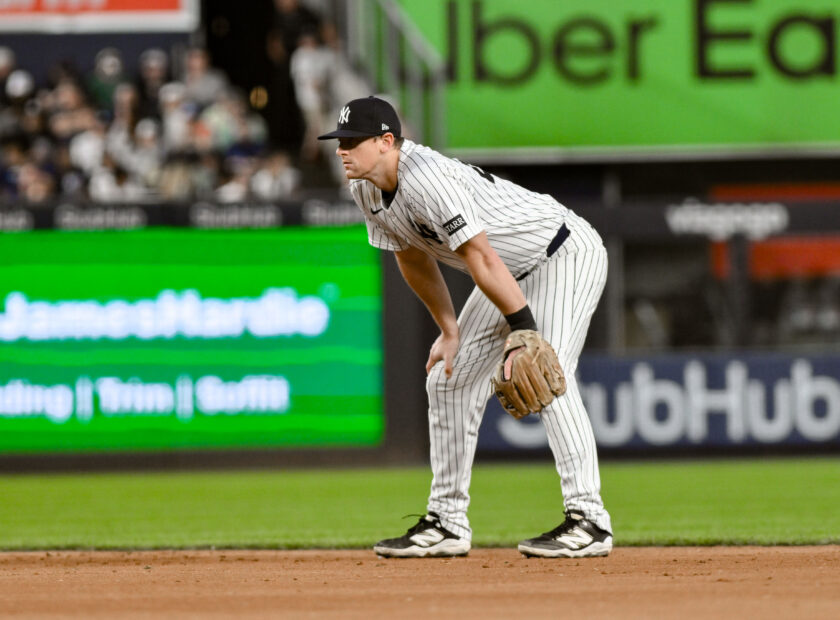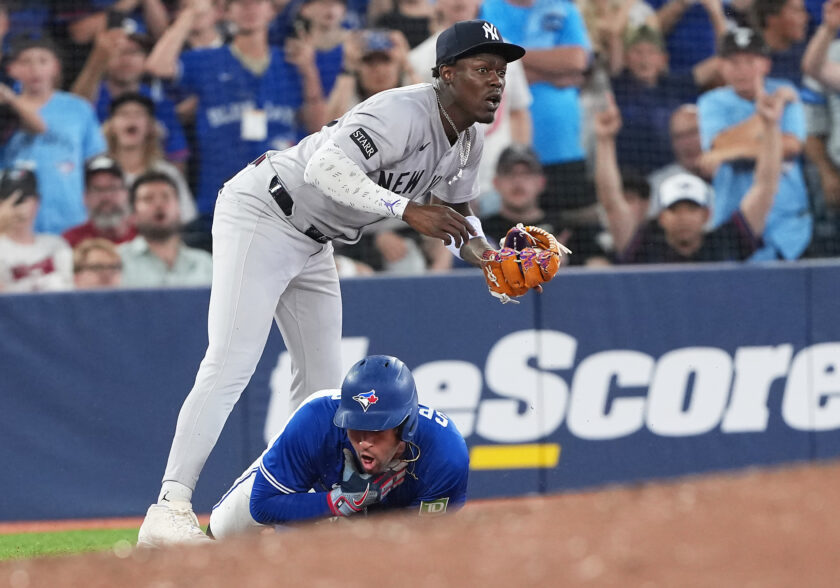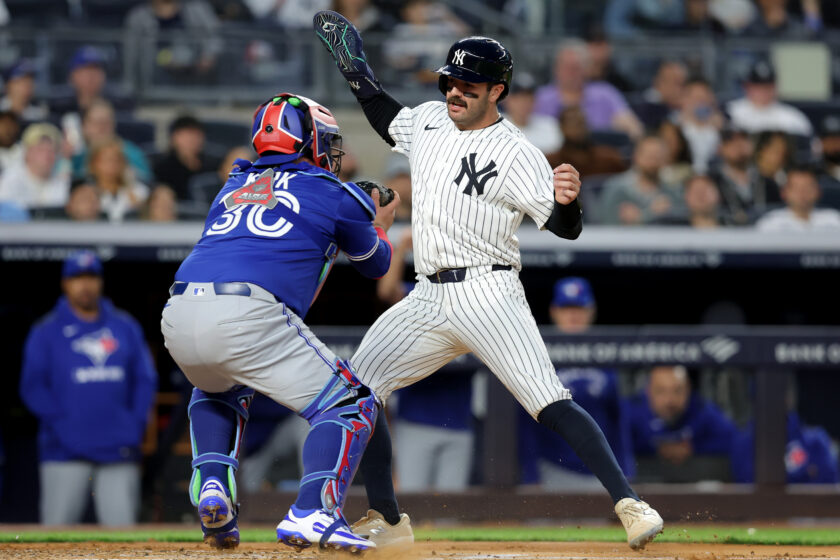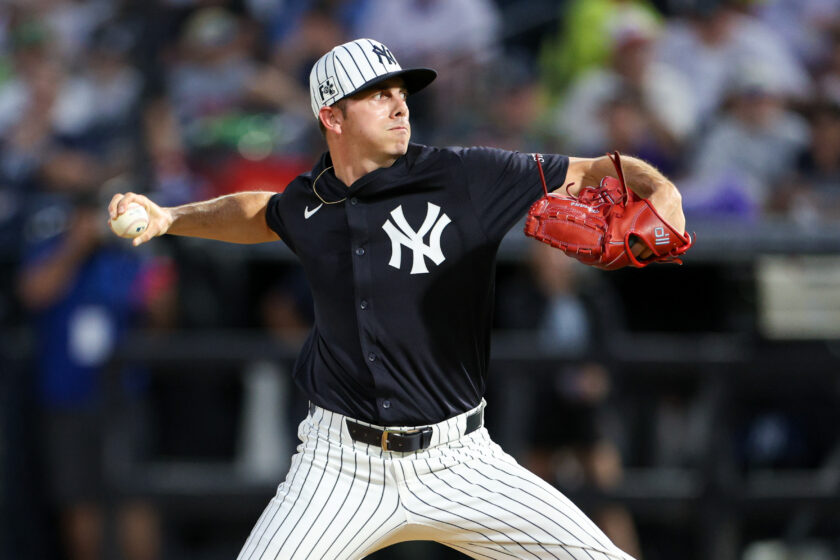New York Yankees: J.A. Happ readjustment must come ASAP
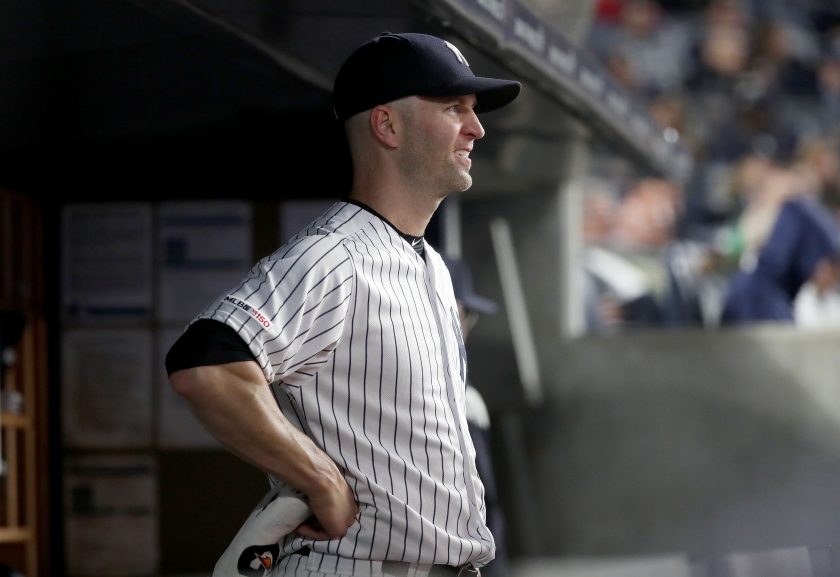
Unless J.A. Happ can quickly adjust his approach on the mound, the New York Yankees may need to seek other options.
[sc name=”josh-benjamin-banner” ]J.A. Happ could have been the second coming of David Cone.
Both men had similar paths to the New York Yankees. Both were acquired from the Toronto Blue Jays at the trade deadline to help aide a playoff push. Much like his right-handed counterpart, Happ pitched well enough to earn a new contract in free agency. I even penned a piece saying how Cone’s Yankees journey was a good reason to re-sign Happ.
And after earning a two-year, $34 million deal after the 2018 season, Happ has not performed as advertised. Gone is the lanky lefty who spins his fastball to generate enough perceived velocity that throws off hitters’ timing. Instead, Happ’s velocity has diminished to the point where the 37-year-old looks, in a word, old.
Happ took the loss in the day tilt of Wednesday’s doubleheader against the Philadelphia Phillies, a game the Yankees lost 11-7. Happ, despite having a 3-0 lead at one point, looked absolutely defeated on the mound. He wasn’t getting strikes by throwing his fastball away, but he continued despite issuing six walks. It wasn’t that Happ couldn’t throw his fastball inside to right-handed batters, but more that he was flat out refusing to.
The outing dropped Happ to 0-1 on the year, his ERA a gargantuan 10.29. Whatever his approach has been this young season, it’s not working.
And if Happ can’t find a way to pitch better, the Yankees must not hesitate to pull him from the rotation.
Free agency gone wrong

The saddest part about J.A. Happ’s $34 million contract is that it made sense at the time. Remember, Happ arrived in August 2018 and went 7-0 with a 2.69 ERA in 11 starts. He played the part of the hired gun perfectly, same as Cone did.
And while Cone spent five more years in New York and won four World Series rings along the way, Happ will not follow the same path. Instead of David Cone, he has looked more like Jaret Wright, who parlayed a strong comeback season with the Atlanta Braves into a three-year deal from the Yankees. It proved to be a fluke as he posted a 4.99 ERA to go with 16 wins in two years before being traded away.
Now, to be fair, Happ hasn’t been as bad as Wright. Including his time with the Yankees and the month of September last year, when he posted a sub-2 ERA, he hasn’t been a total bust.
But the fact remains that J.A. Happ hasn’t lived up to his deal, and now it’s starting to hurt the team badly.
What’s the problem?
And how can Happ solve his problems on the mound? Well, it all starts with diagnosing the problem, which is pretty simple. Per Fangraphs, his average fastball velocity is 91.2 mph for his career. It’s not a very fast pitch, but Happ got by thanks to his ability to spin it and generate enough movement to fool opposing hitters.
Now, in 2018, Happ’s average fastball velocity was an even 92 mph. In 2019, his first full season as a Yankee, it dropped to 91.3 and Happ struggled to a 12-8 record and bloated 4.91 ERA.
But 2020 was supposed to be different. Happ pitched to a 1.38 ERA in spring training thanks to a tweaked windup and delivery, and more confidence in his two-seamer and changeup. After seeing his name pop up in trade rumors all offseason, Happ was back, ready, and looking in top form.
Whatever magic J.A. Happ had down in Tampa hasn’t followed him back from a four-month layoff. His average fastball velocity is a paltry 90.9 mph. In an abbreviated season, finding a quick solution is critical.
What’s next?
The most practical approach would be for Happ to ditch his four-seam fastball and rely on a two-seamer he fiddled with last year. It played a key role in his September resurgence, as did extended use of his changeup. This year, however, Happ has gone right back to the four-seamer. Even if he’s still building velocity back up, he needs to not throw it until it’s in top form.

And readjusting isn’t easy, but could be crucial for Happ’s future. His contract has a vesting option for next season and under current circumstances, it kicks in at 10 starts on the season, or 61.1 innings. The next start will be his third of 2020. In a short season, and even with the Yankees at 9-2 and first in the AL East, pitching is all the more important.
Final thoughts
Long story short, J.A. Happ doesn’t have a lot of time to get things right, and he won’t suddenly go full Benjamin Button and age in reverse. No, Happ needs to accept his fastball velocity has diminished and learn how to pitch around it. This doesn’t just mean embracing the two-seamer and changeup with open arms. It also means continuing to challenge hitters and be aggressive instead of continually pitching away even when that doesn’t work.
Otherwise, manager Aaron Boone needs to make the hard decision and put Happ in the bullpen. His ERA as a Yankee is 4.46. Taking his strong 2018 finish out of the equation, it balloons up to 5.13.
Meanwhile, top prospect Clarke Schmidt is ready to pitch in the majors, and Mike King has held his own in a pair of mop-up appearances. Both are more than capable of handling a spot at the back end of the rotation.
J.A. Happ has the tools to make adjustments. Working with new pitching coach Matt Blake, he can easily find an approach that works. But Blake already has his hands full trying to solve James Paxton’s lack of velocity, not to mention helping Masahiro Tanaka work his way back from a concussion. Jordan Montgomery also needs monitoring despite being recovered from Tommy John surgery.
Except Happ didn’t have Blake last year and adjusted fine without him, even if it took a while. He had thus better right himself soon, lest he want to find himself out of the starting rotation.
- DRAFTKINGS SPORTSBOOK
BET $5 & GET $150 IN BONUS BETS INSTANTLY!
- FANDUEL SPORTSBOOK
BET $5, GET $150 BONUS!
- CAESARS SPORTSBOOK
$1,000 BET ON CAESARS!
- BETMGM SPORTSBOOK
BET $5, GET $158 BONUS!
- BET365
GET $150 BONUS OR $2,000 FIRST-BET SAFETY NET!
Josh Benjamin has been a staff writer at ESNY since 2018. He has had opinions about everything, especially the Yankees and Knicks. He co-hosts the “Bleacher Creatures” podcast and is always looking for new pieces of sports history to uncover, usually with a Yankee Tavern chicken parm sub in hand.






